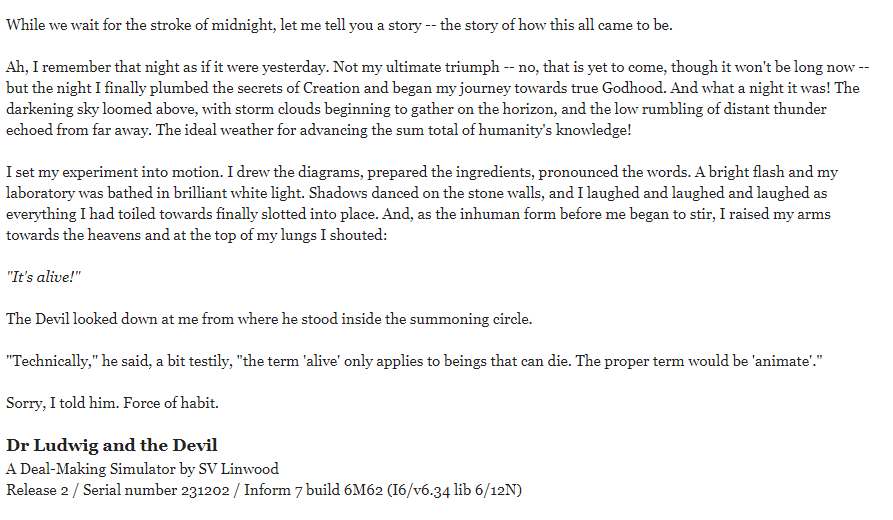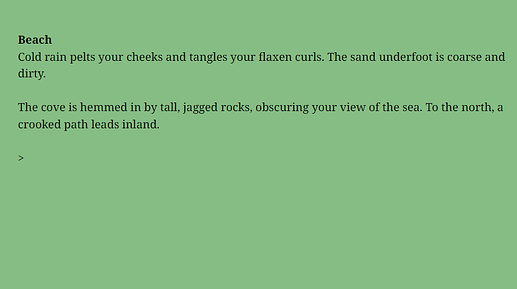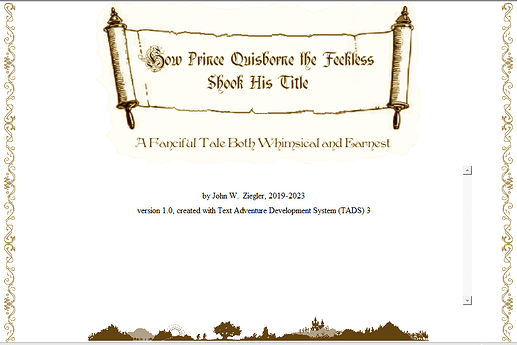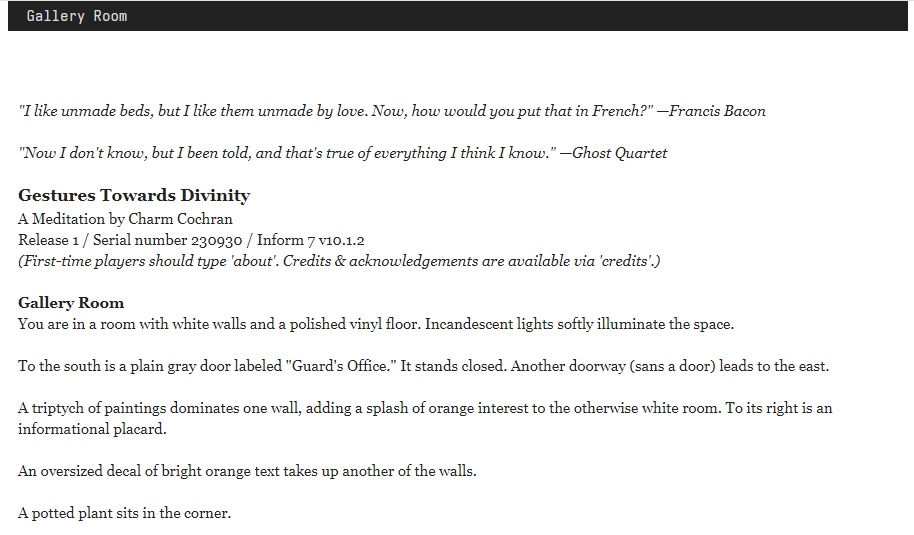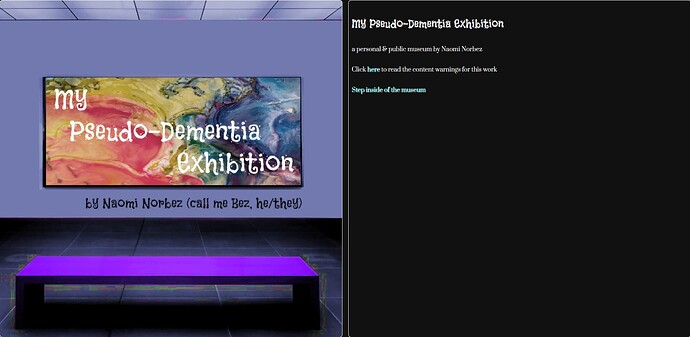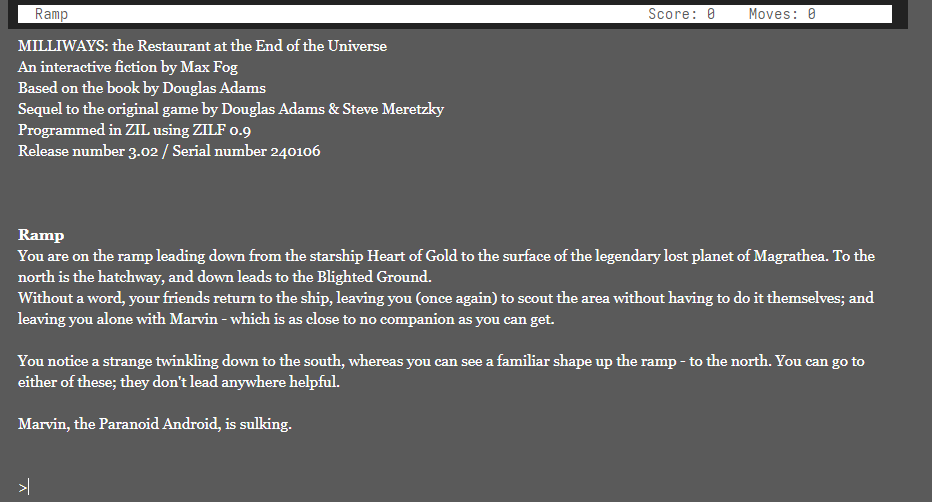(Note: this is the current end of the IFComp series. I’ll be working on the XYZZY series over the next week or so).
Overview and Influences
This year had a proliferation of out-of-IFComp competitions and games, stoking a lot of creative efforts. That I believe trickled down to IFComp.
I took over Spring Thing from Aaron Reed very soon before the 2023 competition, and by then several great games had already been created:
- Repeat the Ending, one of the competition winners, has zoomed to the tops of IFDB charts, and is now the 4th-highest rated Spring Thing game ever, and won the 2023 IFDB Awards. It takes the form of a retrospective of a fictional 1996 game that covers topics like mental illness and the death of a parent. Its ‘game within a game’ approach of looking back at retro adventure bears similarities with BJ Best’s And Then You Come To A House Not Unlike The Previous One, and with two games in the IFComp itself, Lake Adventure and Hand Me Down.
- Spring Thing also showcased a game written in Google Forms named The Kuolema (later ported to Twine); its author, Ben Jackson, would go on to place highly in IFComp.
- I Am Prey by Joey Tanden, a complex replayable hunter-prey game, continued the TADS renaissance of the last year or two, being the first TADS game entered in Spring Thing in 7 years. Several more TADS games would show up in IFComp.
New competitions included ideas like Seed Comp (first entrants share game ideas with each other, then make games based on them), the Bare Bones Jam (using minimal assets and styling), Shufflecomp (based on an earlier iteration), and the Single Choice Jam (where only one choice can be made each game). At least one IFComp entry was a game made for one of these comps; Onno Brouwer’s One King to Loot them All was a late Single Choice Jam entry.
Ryan Veeder had also begun, a couple years earlier, a series of time-travelling games about a young assassing. These Little Match Girl games became especially prolific this year, with six entries in 2023. Right in the middle of them was an IFComp game, Little Match Girl 4.
Top Games
Dr Ludwig and the Devil
by SV Linwood
SV Linwood, who took 3rd the previous year, came back with a vengeance this year, earning a whopping 8.43 average score. In contrast to the parser-like Twine game of the previous year, this game is an Inform game featuring, well, Dr Ludwig and the Devil.
You’ve summoned the devil for power in a small village, but he’s not inclined to make a deal with you. You have to outwit both the devil and the folks in the village in order to come out alive and on top.
This game has a lot of features common to XYZZY winners, such as in-depth implementation, vibrant characters and a strong storyline. It tied for one of the Best Game IFDB awards and is likely to take home some prizes at the XYZZYs later this year.
LAKE Adventure
by BJ Best
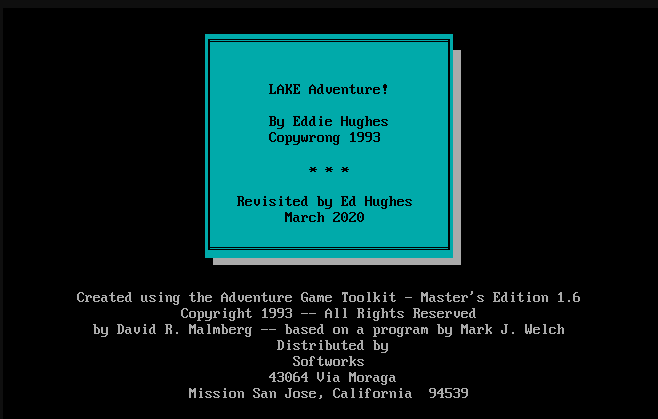
This is BJ Best’s second ‘retrospective’ ifcomp game, after his previous winner two years prior. Whereas that one was kind of flashy, nostalgic, and sweet, this one is more sad and grim. It’s written in AGT, a language predating TADS and Inform, but is an especially polished example of it. Exploring an old game, you encounter comments from the author, who is portrayed as discussing, explaining, and apologizing for the game. The game resonated with players, making BJ Best one of 6 authors to place both 1st and 2nd in IFComp (including Emily Short and Ryan Veeder).
The online version of this game included a DOS emulator, making this game a pretty impressive technical feat. It’s one I’d like to revisit and learn from in the future.
The Little Match Girl 4
by Ryan Veeder
The Little Match Girl games are a long-ongoing series, mostly entered outside of competitions. While this has ‘4’ in the title, there have been several unnamed entries as well.
The concept lends itself well to games. The idea is based on Hans Christian Andersen’s tale, where a little dying math girl stares into a flame and envisions another life. In these games, the match girl can teleport through space and time by staring into flames. She is adopted by Ebenezer Scrooge (taking the name Ebenezabeth) and becomes an assassin for hire.
The games have mild continuity but are mostly episodic, like The Simpsons or Early Adventure Time.
This game uses extensive CSS with the vorple engine to present changing colors, cinematic openings, and a speed-based game. There are many worlds, both prehistoric and spacelike, both fantasy-filled and mundane. True to IF norms, the IFcomp-entered game is the most-played and most popular of the set on IFDB.
Other Games
How Prince Quisborne the Feckless Shook His Title
by John Ziegler
This game is really big. Part of the TADS renaissance, it is the tale of a feckless young man who needs to win the hand of his love. You, a mature, loyal knight, will teach him wisdom, maturity, and compassion over the course of this many-many-many-hours-long game.
Mechanically, you are visiting villages and cities, getting quests, and fulfilling them by fetching items, learning patterns, and solving riddles (in one case, a whole mountain full of mathematical and wordplay puzzles). Along the way, cutscenes trigger regarding the emotional, spiritual and moral growth of your young man.
Many actions will trigger whole pages of text, and the number of puzzles and rooms exceeds all but the largest of games. I made one of the largest Inform games of all time at around 350K words, beating out Blue Lacuna. This game far outstrips mine in size, at least 1.25-2 times larger in text. The only parser game I know of that is larger is a collaborative erotic game with 1,000,000 words.
This game can provide weeks or months of satisfiation to the diligent player.
Gestures Towards Divinity
by Charm Cochran
This game taught me the difference between Francis Bacon, philosopher, and Francis Bacon, painter. It is Charm Cochran’s most polished and most popular game, a parser game set in a museum exhibition with the paintings of Francis Bacon. Throughout the game, you can enter the world of the paintings and talk with the characters, as well as real humans in the museum, asking them about life, love, and about Francis Bacon itself.
Its style is open-ended and exploratory, although it does include achievements as a way of guiding the player.
My Pseudo-Dementia Exhibition
by Bez
This is another game featuring an interactive museum display with paintings, but this one is in Twine and shows the media visually.
It’s an autobiographical game, and is Bez’s most popular game. It tells a harrowing real life story of someone losing his ability to remember before being diagnosed with pseudo-dementia and going in for in-patient treatment. Bez’s ability to paint real life with vivid strokes comes to the fore here, making this an effective piece of interactive non-fiction.
Milliways: the Restaurant at the End of the Universe
by Max Fog
This game stood out in a year of that included multiple retro languages like AGT and BASIC. Milliways is written in ZIL, the reconstructed form of the language the original Infocom games was written in.
What’s more, it expands on actual code and outlines for a scrapped Infocom game of the same name. While it attracted noticeable attention, its association with one of the the most popular Infocom games ever led to some harsh comparisons.
Assorted Others
There are a great many games this year where I’d like to say ‘This author, who made good games in the past, made an especially great game in a similar vein that I enjoyed’. These include:
- Honk, by Alex Harby, a fun circus parser game that won over people’s hearts. Alex had previously released Vampire Ltd.
- Ben Jackson, author of the popular google forms game Kuolema in Spring Thing 2023, wrote Lunium, a Twine game about amnesia, Victorian London, and escape room puzzles.
- Arthur DiBianca, longtime IFComp entrant with perenially popular pieces, released The Vambrace of Destiny, a kind of MetroidVania involving spells.
- Felicity Banks, an author who first entered when I did in 2015 and who has authored numerous Choicescript games, returned to IFComp with Bali B&B, her most popular game yet.
- JJ Guest wrote To Sea in a Sieve, a sequel to one of my top 10 all-time favorite games, To Hell in a Hamper. While this one was more difficult and a bit more serious, it was my personal favorite game of the competition in a very strong year.
- Victor Gijsbers, author of many notable games like De Baron, Kerkerkruip, and Turandot, wrote Xanthippe’s Last Night with Socrates, a popular Ink game involving an attempt from a wife to get her husband to spend the night with her.
Like the previous year, several Texture games were released as part of what seems to be a cooperative writing workshop in New York.
Legacy
We’ll have to see on the long-term legacy of this IFComp. Several first-time entrants have gone on to make numerous contributions on the forums and in other competitions.
Made with the support of the Interactive Fiction Technology Foundation

